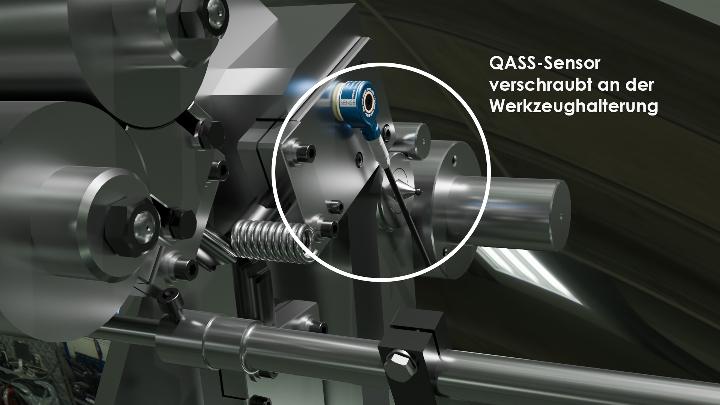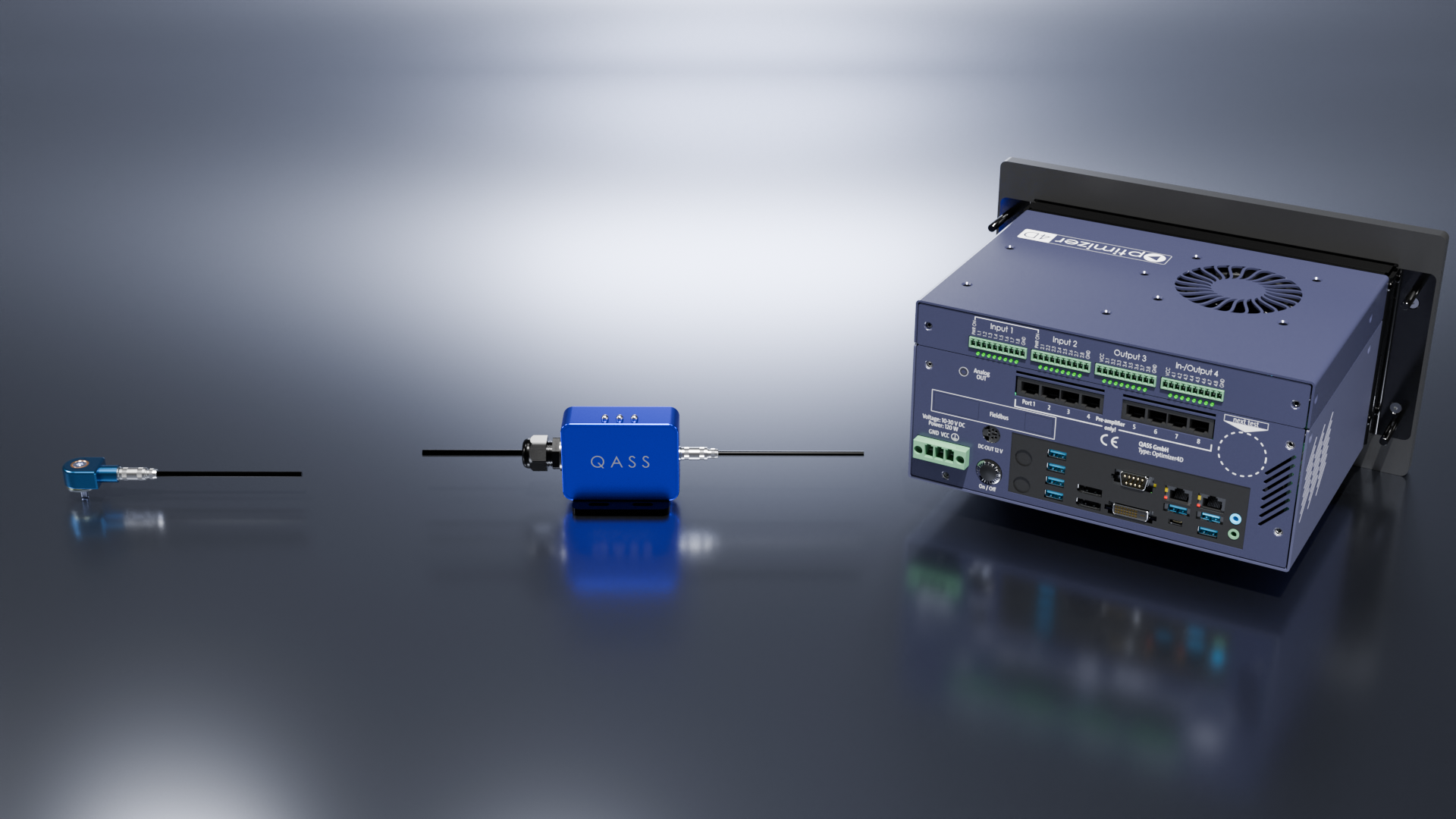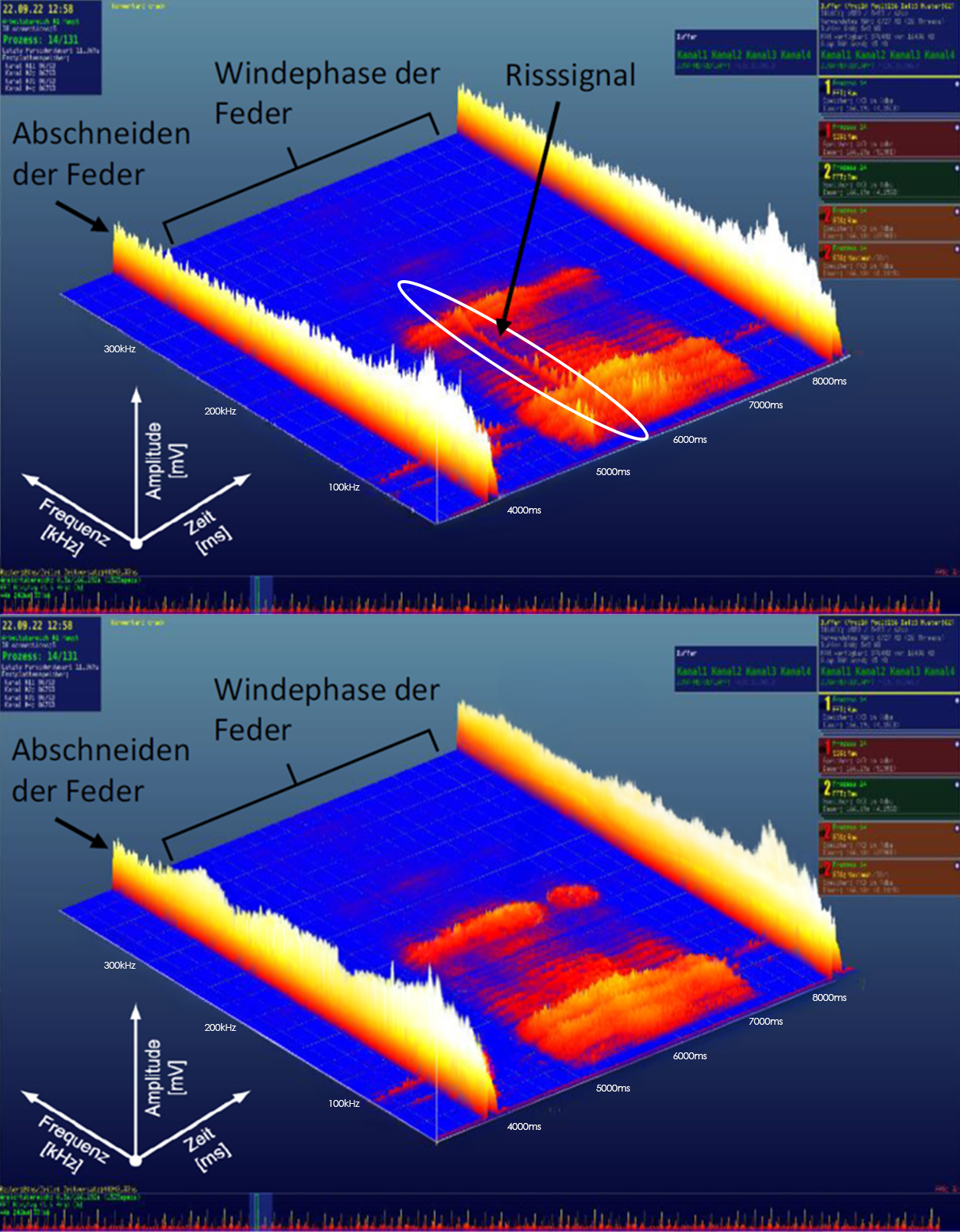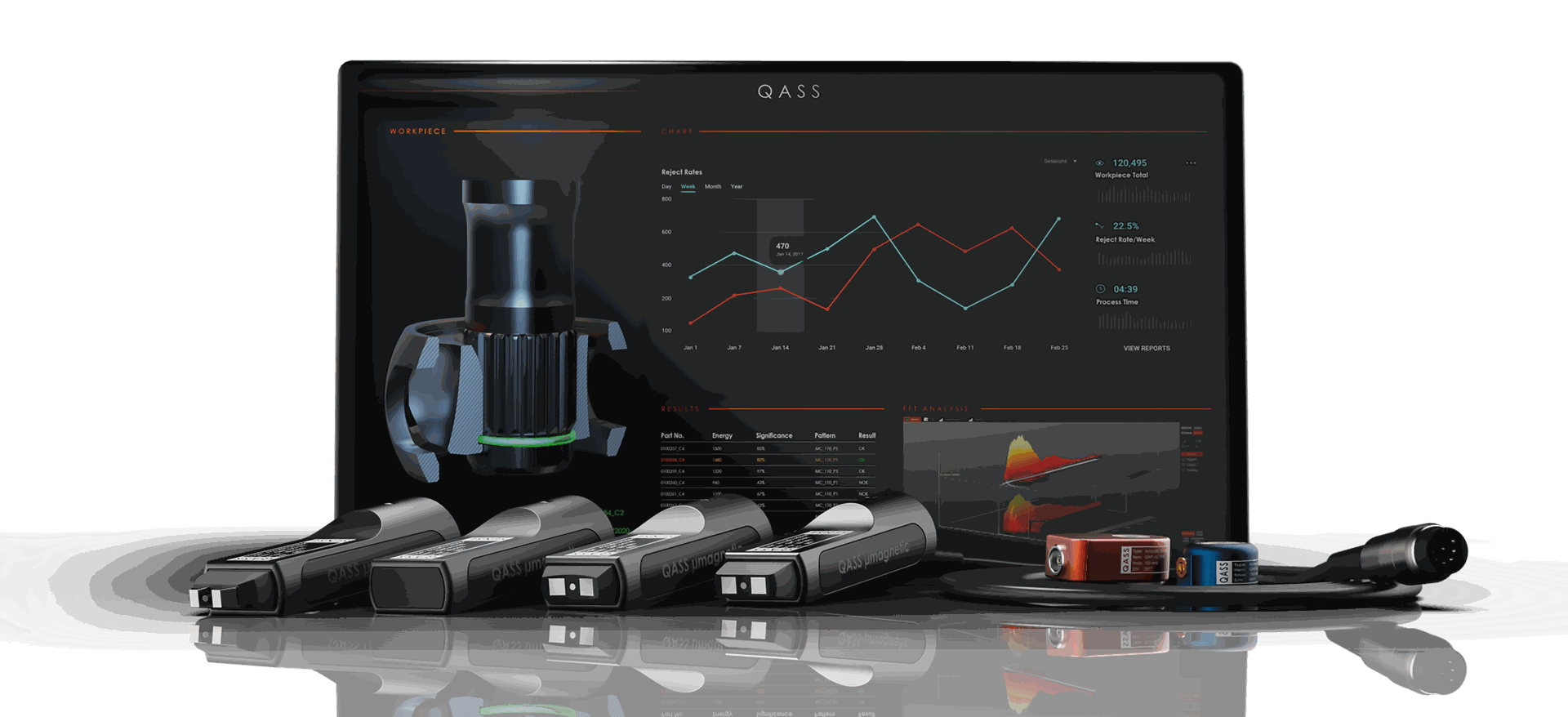The spring industry faces the challenge of reliably detecting cracks during the coiling and setting of springs. This problem poses risks to the safety of the end user and can lead to complaints and reputational damage. Traditional methods such as visual inspections or spot checks often prove insufficient to detect all cracks, especially those inside the material or closed cracks.
In order to achieve an improvement in this area, the Association of the German Spring Industry (VDFI) carried out a research project together with Wismar University of Applied Sciences. The Optimizer4D from the company QASS was used as part of the project. The measuring device collects and analyzes structure-borne sound data in real time so that cracks can be detected immediately and faulty components can be automatically sorted out - regardless of their size or position in the material.
From the research lab to series production
Integrating the Optimizer4D into existing winch or setting systems is straightforward. The sensor is attached to the machine and monitors the entire production process in real time. QASS uses force-fit connections to record live data from the manufacturing process and analyzes it using advanced filtering methods, neural networks and state-of-the-art artificial intelligence methods.
 QASS active sensor screwed to the tool holder of the coiling machine.
QASS active sensor screwed to the tool holder of the coiling machine.
 QASS measuring chain at a glance: Structure-borne sound signals are transmitted from the QASS active sensor to the preamplifier. Here, the data is processed again and then sent to the 'Optimizer4D' measuring system.
QASS measuring chain at a glance: Structure-borne sound signals are transmitted from the QASS active sensor to the preamplifier. Here, the data is processed again and then sent to the 'Optimizer4D' measuring system.
Optimizer4D also offers the option of carrying out your own evaluations and analyses using open Python programming. Customers can integrate the data obtained into their cloud and receive detailed statistics and trend analyses via web-based dashboards.
 Structure-borne sound image of a coiling process of a spring in the QASS Optimizer4D measurement system (with and without crack).
Structure-borne sound image of a coiling process of a spring in the QASS Optimizer4D measurement system (with and without crack).
Production monitoring ready for series production: QASS raises production reliability to a new level
Following the successful completion of the VDFI project, the first series applications are already in use. Customers benefit from automated monitoring that records every millisecond of the production process and reliably detects defective parts, even in large quantities.
But the Optimizer4D can do even more: it makes it possible to monitor the condition of tools, evaluate the primary material and track machine trends. This gives companies valuable insights into their production processes and allows them to react to maintenance requirements at an early stage.
 QASS 'Optimizer4D' with different sensor types.
QASS 'Optimizer4D' with different sensor types.
QASS: World market leader for in situ crack detection
QASS has been the world market leader in crack detection during straightening of transmission shafts for over 20 years. Especially in the automotive industry, the largest companies in the world rely on QASS technology. Every car manufactured in Europe and the USA is inspected at least once during its production with QASS technology. The same principle that made QASS successful in straightening can also be applied to the manufacturing of springs.
Detecting cracks, evaluating primary material, detecting wear on the coiling tool, tracking machine trends - the Optimizer4D makes all this possible.
For a more detailed presentation of the technology, you can watch our video.